The 6 Most Ridiculous Things People Claimed to Legally Own
We don't want to get into some big debate about intellectual property rights -- it's full of legal gray areas, and we're no lawyers. But we are confident in saying that some trademark and copyright claims are downright fucking ridiculous. For example ...
Häagen-Dazs Insists It Owns All Fake Scandinavian Words

It's a well-known fact that imported stuff is always better than domestic. With that in mind, is it any surprise that Häagen-Dazs ice cream remains one of the most successful brands in your grocer's frozen department? With its Danish sophistication, European subtlety, and totally-badass-metal umlaut, it runs caramel swirls around domestic swill like Ben & Jerry's. Wait, no, never mind. Not only has Häagen-Dazs always been an American brand, but it turns out that "Häagen" and "Dazs" aren't even real Danish words (or real words in any language).
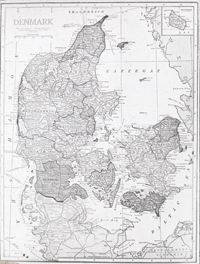
In fact, it's so not-Scandinavian that the company was founded in the Bronx in 1959 by Polish immigrants Reuben and Rose Mattus when they put some random letters together to make a name that sounded vaguely Scandinavian to their ears. That no one lodged any complaints about their deliberate deception is amazing; that they tried to sue someone else for doing the exact same thing is mind-blowing.
It happened in 1980, when Richard Smith had the same idea they did and began selling his own domestic ice cream under the name "Frusen Glädjé" -- which, shockingly enough, are real words ("frusen glädjé" means "frozen joy" in Swedish). Häagen-Dazs, no doubt filled with rage that someone had had the presence of mind to pick up an English-Swedish dictionary, took them to court over the right to pretend to be Scandinavian.
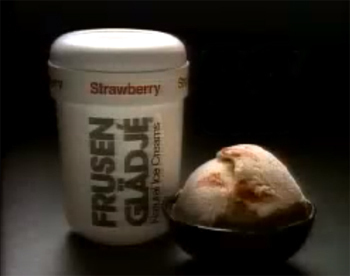
No, really. The lawsuit alleged that Frusen Glädjé had stolen several of their ideas, including (a) pretending to be European, (b) using a map of Scandinavia in their advertising, and (c) including serving directions on the package (seriously).
The Fallout:
The court ruled against Häagen-Dazs on the grounds of "unclean hands" -- a bit of legalese that essentially means "Seriously? You're asking the government to protect your right to lie to consumers? You're not a bank." Frusen Glädjé was later sold to Kraft, and then Unilever, before it disappeared. Fortunately, everyone learned a valuable lesson, and no American business has ever deceived the public ever again.
Only Spike Lee Is Allowed to Call Things "Spike"

The Nashville Network started out as a country-music cable channel you probably don't remember. Eventually, they gave up on country music, changed their name to TNN, and switched to more profitable programming about boobs and explosions. In a move to further distance themselves from the past, they eventually settled on the cartoonishly masculine name "Spike TV."
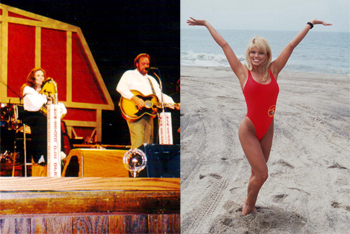
Now, you may have recognized the name "Spike" as the name of sometimes-acclaimed film director Spike Lee. You may have also recognized it as the name of director Spike Jonze, or that vampire from Buffy, or millions of dogs, or those things they put railroads together with. Really, there are a lot of things called "Spike." But it was Spike Lee who, in a moment of vanity that would have impressed even Carly Simon, said to himself, "No, this has to be about me," and filed suit.

His reasoning was that he didn't want his name associated with lowbrow programming, because when you see "Spike TV" in your cable guide, what else would you assume but that it's 24 consecutive hours of Spike Lee movies?
The Fallout:
It's not terribly hard to understand why Spike Lee -- director of classy films like She Hate Me, in which a guy knocks up lesbians for money -- wanted to avoid sullying his name with the round-the-clock Baywatch reruns on Spike TV. And Lee did win a temporary injunction against the network shortly before everyone realized that it was frivolous -- it turns out you can't claim a trademark on a nickname as generic as "Spike." Lee and Spike TV settled out of court -- Spike TV got to keep their name, and Lee was not forced to change his back to "Shelton."
Games Workshop Claims to Own the Concept of Space Marines

Science fiction is a genre based almost entirely on the theme of people doing the things that people usually do, except in space. Given that people love space and love explosions, it took about 40 seconds after the invention of sci-fi for someone to type the words "space marines" on their steampunk typewriter. The term goes back at least to 1932, and the trope was made iconic by books like Starship Troopers and films like Aliens. We also have it on good authority that there's something called an "Xbox" that does nothing but play games starring space marines.

But in 1987 -- more than half a century after the sci-fi world had combined the chocolate of "space" with the peanut butter of "marines" -- Games Workshop published a science fiction strategy game called Warhammer 40,000. One of the character classes in it was called "space marine," which Games Workshop quickly trademarked. From that moment forward, anyone else publishing a sci-fi tabletop game had to fill it with space seamen instead. Or something.
Twenty years later, Games Workshop decided to enter the fiction market and were shocked to find that fiction about space marines already existed. The only reasonable thing to do was sue these bastards who stole their idea of marines in space. The biggest dick move on the thieves' part was that they apparently used time travel to do it.
The Fallout:
Unfortunately for Games Workshop, they apparently knew nothing at all about sci-fi literature. They could have sued any one of the hundreds of authors who used the words "space marine" in their books. They could have sued freaking Microsoft for publishing a line of Halo books. People love it when Microsoft gets sued.

Instead, they went after M.C.A. Hogarth, a stay-at-home mom making ends meet by self-publishing sci-fi novels. They contacted Amazon, demanding that they take down her hilariously titled novel Spots the Space Marine: Defense of the Fiddler.
As you might imagine, this sort of corporate bullying didn't sit well with the general public. The Interwebs lit up with nerdrage, several noted sci-fi authors jumped to Hogarth's defense, and Games Workshop quietly dropped the complaint. Meanwhile, Hogarth got all sorts of free publicity for her book. Admit it, the title alone has you curious.

NBC Tries to Stop Letterman from Numbering Things

The battle to secure the coveted role of the host of NBC's The Tonight Show didn't start with the recent war between Jay Leno and Conan O'Brien -- in the '90s, the show was rocked by an arguably stupider scandal. When Johnny Carson (ask your parents) retired in 1992, his heir apparent was David Letterman, who had been hosting Late Night on NBC for years, but he was passed over in favor of Jay Leno.
The rest, as they say, is history: Leno took the reins of The Tonight Show, and Letterman found a home at CBS, where he created The Late Show With David Letterman. Then the two men settled into their now-familiar routines: Letterman spent the next two decades making jokes in the form of lists (which we at Cracked can't fault him for), and Leno spent the next two decades making tired jokes about ... having a really big chin. Or something. Look, we've never actually watched Leno.

But things almost got nasty, and we mean on a legal level. Upon his move to CBS, NBC immediately claimed copyright ownership of Letterman show cornerstones like "Top Ten Lists" and "Stupid Pet Tricks." This meant, in effect, that Letterman wasn't able to take his most popular bits with him and wasn't allowed to do anything that involved ... reading lists? Or having animals on the show, we guess?
The Fallout:
As the controversy wore on, it became clear that NBC didn't even know what they would sue for, exactly. NBC exec Robert C. Wright told the press, "There are certain intellectual property issues that do not travel with Dave. They can certainly do things like that. But they can't do those things." Well, that clears it up.

Meanwhile, NBC got mauled by the court of public opinion before they even managed to take legal action. Letterman joked that The Late Show was going to be called The Stolen Intellectual Property Show. Leno claimed that Dave wasn't allowed to use the letters N, B, or C or the name "Letterman" on the air. Even CBS exec Jeff Sagansky managed to be funny when Major League Baseball moved from his network to NBC. "We feel," he said, "we have a proprietary right to the nine-inning baseball game."
In any case, Letterman changed the title of the "Top Ten List" bit to "Late Show Top Ten," and kept doing the exact same thing he had been, and NBC didn't attempt any further action. It's almost like, we don't know, it was all just about them being petty dicks about the whole thing.
Only Klondike Bars Are Allowed to Use Blue Ink

The Klondike Bar is a little gift from the Asgardian gods produced by Unilever, who, unlike Haagen-Dazs, are a real Dutch company. Rather than take advantage of their European origins to sell the concept of cold, they use the name "Klondike," the color blue, and an image of a polar bear to indicate "Hey, consumers! This product is cold!" Y'know, in case the fact that it's sitting in a freezer isn't enough of a hint. After going to all that effort, they dusted their hands and decided that nobody should ever be able to use these concepts again.
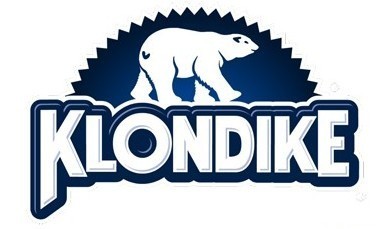
Unfortunately for the makers of Klondike, Kraft Foods sat up in the early 1980s and said, "Hmm, consumers seem to enjoy ice cream wrapped in chocolate. I wonder if we could get in on that." After coming up with the name "Polar B'ar" (marketing guys are geniuses), Kraft chose to put a polar bear on the package and color it blue. Because, y'know, cold. Naturally, this didn't sit well with Klondike, who were under the impression that they owned the color blue.
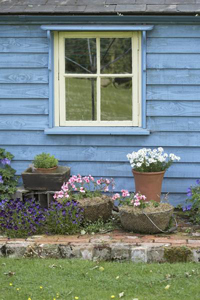
The Fallout:
No, Klondike didn't succeed in trademarking one-sixth of the rainbow. Blue was ruled to be a " functional color" for frozen food, in that it implied "cold" to consumers. In other words, Klondike simply made the connection that millions before it have made between blue and cold. As it turns out, there are certain things people won't do for a Klondike Bar, including letting them stake a claim on a large chunk of the visible light spectrum. Nevertheless, Klondike came out on top, because nobody has ever heard of Polar B'ars to this day.
Monster Cable Claims to Have Invented Monsters

As we've previously discussed, Monster Cable is a company notorious for charging hundreds of dollars for HDMI cables that are, by definition, no better than a $2 piece of copper scraped off the floor of Newegg's warehouse. So the question is, how do they keep people shelling out for their products? The answer, of course, is the same way certain wineries get consumers to spend $300 on a bottle of wine that tastes exactly the same as a $3 bottle of Thunderbird: with mountains upon mountains of marketing bullshit, making sure you know and remember their brand name.

Unfortunately for Monster, they managed to pick one of the most obvious, overused brand names ever. They were far from the first (or last) business to recognize that the word "Monster" sounded totally badass, at least to people with tiny imaginations -- which made things hard for them when they moved to permanently sear their name into the public's consciousness. And by that we mean Monster moved to sue every other business that ever used the name "Monster." Among them:
- Monster Energy Drinks
- Monster Mini Golf
- Monster.com
- Monster Transmission, an auto garage in Florida
- The Discovery Channel (for airing a show called Monster Garage )
- The Chicago Bears (for going by the nickname "Monsters of the Midway")
- Fenway Park (for having "Monster Seats")
- Bally Gaming (for selling "Monster Slots" machines)
And the icing on the cake was their attempt to go after the Walt Disney Company. Why? For making the movie Monsters, Inc. All together, there have been almost 200 legal battles.
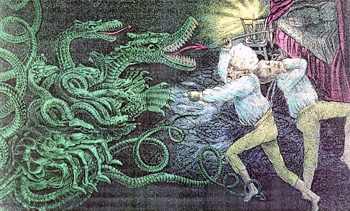
The Fallout:
The funny thing about trademarks is that they're market-specific. If you sell cables and trademark your brand name, that only means no other cable companies can use it. It doesn't mean nobody else can ever use it to describe anything. That's the good news.
The bad news, for the people being sued, anyway, is that when you can sell $2 worth of copper for $100, you have a lot of money to afford an army of lawyers. While Monster has rarely won the lawsuits it's filed, it's cost its opponents enormous amounts in legal fees and wasted countless hours of court time.
Not surprisingly, though, after meeting with Disney's even bigger army of lawyers, Monster sheepishly declared that there had been " no trademark infringement." Go figure.
Luke T. Harrington blogs at the Western Branch of American Reform Presbylutheranism and tweets over at the Twittersphere.
Related Reading: Hypocrisy and copyright law go together like chocolate and peanut butter. Just ask the man who sponsored SOPA and stole someone else's photos for his website. Of course, copyright lunacy extends well beyond the Internet -- the NFL sues basically everybody who uses the name "Super Bowl" without permission. The law is a harsh mistress. That fact will be driven home even harder by reading these horrific end-user license agreements you've already accepted.





